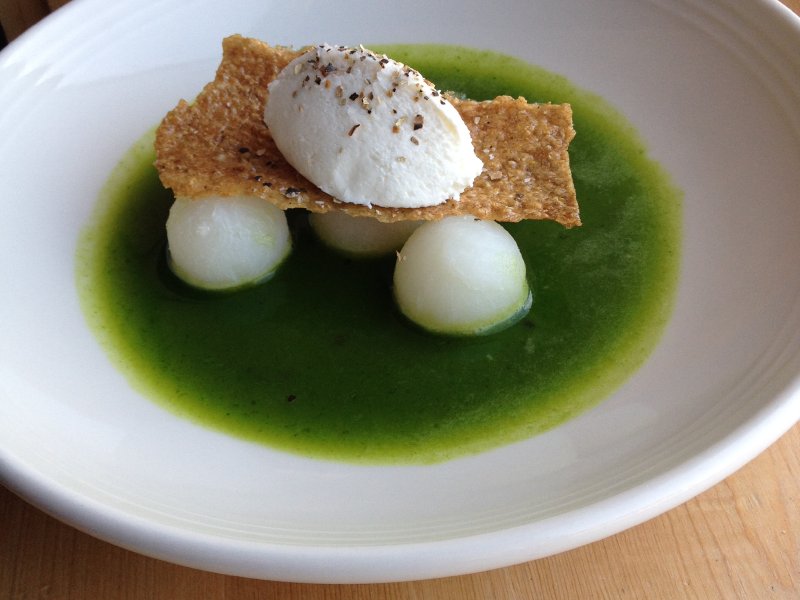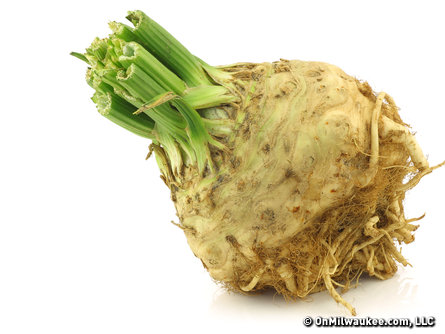Necessity is the mother of invention. It’s also an economic reality for restaurants – particularly those serving farm fresh fare.
"We always struggle with "what’s local?" and what do we do with that?" says Chef Dave Swanson of Braise. "Part of the struggle is how to decide how to be true with it."
Some call it nose-to-tail or root-to-stalk cooking. Swanson calls it best practice.
"Something we often talk about – as far as Braise – is how you make things work financially and responsibly," he says. "You have to use the whole beet. The whole vegetable. Otherwise it just doesn’t make sense. If you take all of your ingredients, and you don’t throw anything away, that gives you the picture."
But, the concept is often more complex than it seems, especially when dealing with local produce. Root vegetables provide a good example.
"Let’s take kohlrabi, for instance," Swanson says. "It’s harvested in the fall, but we use it all winter long. Doing that requires us to have respect for the cellular changes that occur in the vegetable during storage."
Kohlrabi, when it’s harvested in September, is crisp and sweet. It’s delicious chopped and eaten out of hand, or grated into salads.
"We take advantage of its freshness," Swanson says. "We sear it, we grill it. And we’re using the spikes and the leaves."
But, as the vegetable stores, the spikes and leaves are no longer useable and the flesh becomes more and more starchy
"It also becomes flabby," he notes. "So, at that point you want to cook it more, bring out the inherent flavors of it. And then we’ll add other things to the dish that add the fresh brightness that’s missing from the storage vegetable. We always have to look at the evolution of the ingredient, and that becomes part of the planning."
And the idea of "using everything" doesn’t just apply to produce. The restaurant also makes fresh goat cheese with milk from LaClare Farms.
But, for every six pounds of cheese made, there is at least a gallon of whey left over. So, Swanson reserves the whey and uses it as a broth.
"We’ll take the peels off of black Spanish radishes," he says, "And then we dehydrate the skins to make black radish salt. And then we’ll take the flesh and sous vide it with goat’s whey."
The cooked vegetable is then served in the goat’s whey broth with fresh goat cheese and radish salt on top.
As an alternative preparation, Swanson says he might decide to glaze the radish and serve it with pea broth and fresh chevre. Instead of water, he might choose to use goat’s whey, to which he adds a bit of butter and sugar to assist the vegetable in caramelizing, balancing out any bitterness left in the radish.
"In that case," he says, "You’re using other flavors to highlight the different elements in the radish."
Unfortunately, using a variety of techniques isn’t the only factor that has to be considered. When you’re running a restaurant supported agriculture program (RSA) which supplies vegetables to other area venues, as Swanson does, things can sometimes get even more complicated.
"So, this spring," Swanson says, "Compared to years ago when it was warmer, we don’t have as many new things coming in. And some of the RSA restaurants will just jettison using storage vegetables, because they want something new. So, we’ll choose to use those items up to make things work financially."
But, using up hundreds of pounds of leftover root vegetables can seem like a daunting proposition. So, Swanson uses creativity to bring new life to the vegetables.
"I try to have one foot in one season and another foot in another season," he says. "So, I might have celeriac from the winter, but then I’m pulling them together with a garnish of ramps or something with peas. It keeps things new.
Right now Braise is finishing up a batch of 400 pounds of yellow carrots that were brought in last fall.
"It’s about $700 worth of carrots," he says. "That’s a lot of money. So, we’re using carrots in as many ways as we can – from carrot soup, carrot broth, carrot puree, caramelized carrots, you name it."
Swanson says dehydration is one of the tricks he uses often to diversify the versatility of a given ingredient. Juicing carrots, for instance, gives him one ingredient for immediate use. But, then he uses the leftover pulp to make a carrot powder, which can be kept and used as needed.
"We will add it to a vegetable stock to add sweetness, or make mousse with it," he says. "We might make a pancake, or use the powder as part of the flour base in a cake. We might infuse cream with it to use for a dish or a dessert."
But, when it’s the end of the long winter, and your menu is filled with root vegetables, Swanson says it’s a combination of kitchen creativity and customer communication.
"You want to make things sound appetizing – so you might say things like ‘caramelized,’" he says. "You play on terms and serve ‘grilled’ this or ‘seared’ that. And sometimes you just wake up one day and you just decide you’re not doing it anymore, and you change it."
When asked if it takes a special skill to get creative with what happens to be local and available, Swanson chuckles.
"Skill helps," he admits. "But, as a cook, sometimes shit just happens. You can be talking about it as if it’s ethereal, but sometimes you just put things together and they taste good. You just get lucky."
As a passionate champion of the local dining scene, Lori has reimagined the restaurant critic's role into that of a trusted dining concierge, guiding food lovers to delightful culinary discoveries and memorable experiences.
Lori is an avid cook whose accrual of condiments and spices is rivaled only by her cookbook collection. Her passion for the culinary industry was birthed while balancing A&W root beer mugs as a teenage carhop, fed by insatiable curiosity and fueled by the people whose stories entwine with every dish. Lori is the author of two books: the "Wisconsin Field to Fork" cookbook and "Milwaukee Food". Her work has garnered journalism awards from entities including the Milwaukee Press Club. In 2024, Lori was honored with a "Top 20 Women in Hospitality to Watch" award by the Wisconsin Restaurant Association.
When she’s not eating, photographing food, writing or planning for TV and radio spots, you’ll find Lori seeking out adventures with her husband Paul, traveling, cooking, reading, learning, snuggling with her cats and looking for ways to make a difference.





